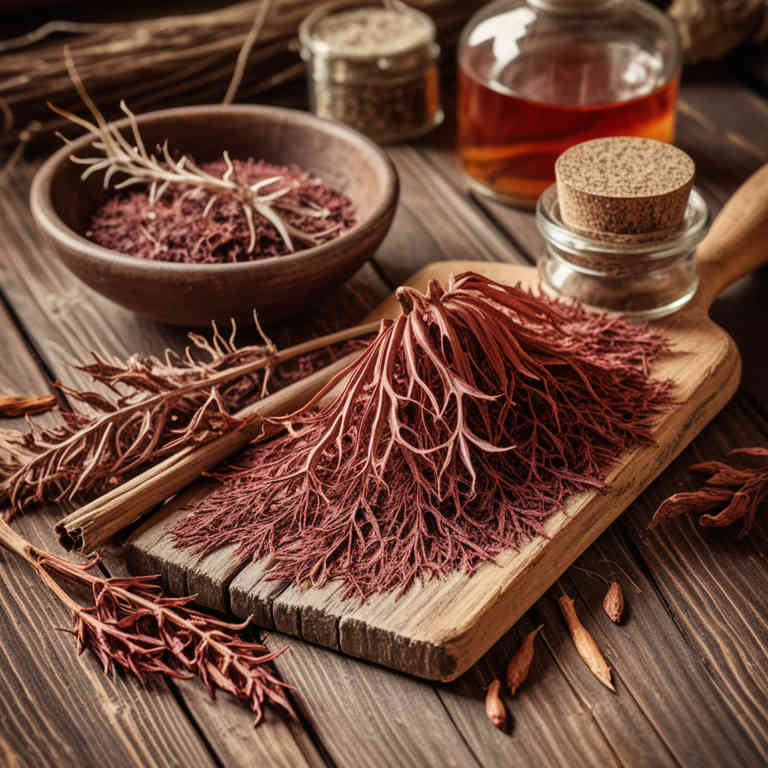Rheum palmatum decoction for medicinal use

Rheum palmatum decoction is a traditional herbal preparation made by boiling the roots of the plant Rheum palmatum, commonly known as Chinese rhubarb.
This decoction is widely used in herbalism for its purgative properties and to support digestive health. It is often employed to treat constipation and to cleanse the intestines by stimulating bowel movements. In traditional Chinese medicine, it is also used to reduce inflammation and detoxify the body.
However, it should be used with caution due to its potent effects on the gastrointestinal system.
Uses
Rheum palmatum decoction has been used to treat digestive issues, inflammation, and skin conditions for centuries in traditional Chinese medicine.
Historically, it was valued for its purgative properties and was often used to cleanse the body and alleviate constipation. In traditional practices, it was also believed to have detoxifying effects and was used to treat ailments like fever and rheumatism. Modern research suggests that the decoction contains compounds with anti-inflammatory and antimicrobial properties, supporting its traditional uses.
Today, it is still used in herbal formulations for digestive health and inflammatory disorders, though its use is often regulated due to its potent effects.
Benefits
Rheum palmatum decoction has health benefits such as promoting digestion, reducing inflammation, and supporting liver function.
It is traditionally used in Chinese medicine to treat conditions like constipation, arthritis, and skin disorders. The decoction contains compounds that may help detoxify the body and improve gut health. It is also believed to have antimicrobial properties that can aid in fighting infections.
However, it should be used with caution and under professional guidance due to its potent nature.
Constituents
Rheum palmatum decoction active constituents include anthraquinones, alkaloids, tannins, and polysaccharides.
These compounds contribute to its traditional use in promoting digestive health and reducing inflammation. Anthraquinones are known for their laxative effects, while alkaloids may have antimicrobial properties. Tannins provide astringent qualities that can help in soothing the gastrointestinal tract.
Polysaccharides are believed to support immune function and overall gut health.
Preparation
To make Rheum palmatum decoction, begin by gathering fresh or dried Rheum palmatum roots, which are typically harvested in the fall.
Wash the roots thoroughly and cut them into small pieces to increase the surface area for extraction. Place the prepared roots in a pot and add enough water to cover them by about an inch. Bring the mixture to a boil, then reduce the heat and let it simmer for approximately 20 to 30 minutes.
Strain the liquid through a fine mesh or cheesecloth to separate the decoction from the plant material, and allow it to cool before use.
Side Effects
Rheum palmatum decoction may lead to gastrointestinal irritation, including nausea, vomiting, and diarrhea, due to its high content of active compounds like anthraquinones.
It can also cause dehydration and electrolyte imbalances if consumed in large amounts or for prolonged periods. Some individuals may experience allergic reactions such as skin rashes or itching. Long-term use may lead to dependency or damage to the liver and kidneys.
It is important to consult a healthcare professional before using this preparation, especially for individuals with pre-existing medical conditions.